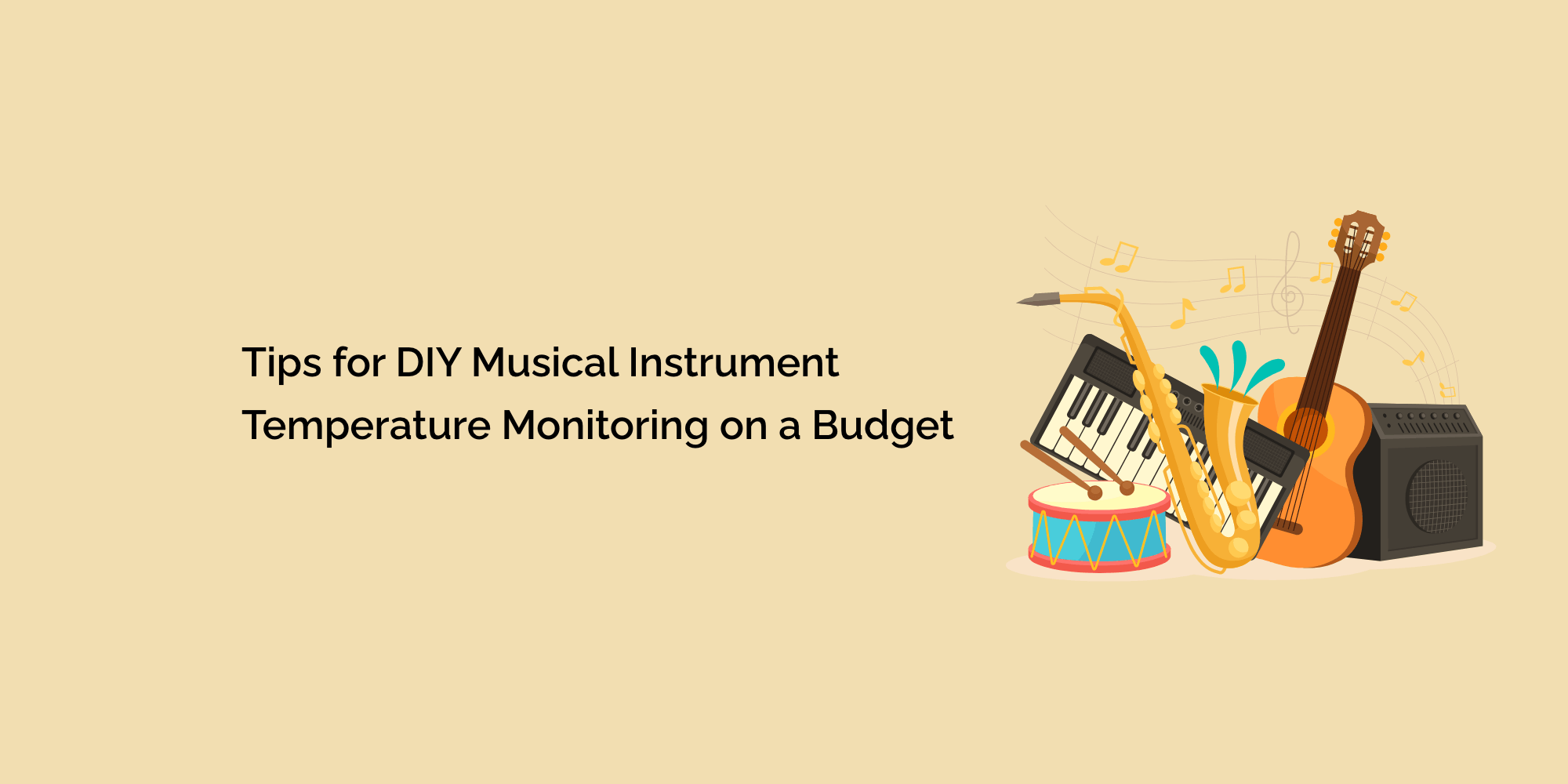Maintaining optimal temperature conditions for musical instruments is crucial for their preservation and performance. While advanced technologies are available for temperature monitoring, they may only sometimes be feasible for musicians on a tight budget. However, DIY (Do-It-Yourself) solutions allow for effective temperature monitoring without breaking the bank. This detailed blog will explore practical tips and cost-effective techniques for DIY musical instrument temperature monitoring. By implementing these tips, musicians can ensure their instruments are stored in suitable temperature conditions without incurring significant expenses.
The Importance of Temperature Monitoring for Musical Instruments
Temperature monitoring is crucial for maintaining the quality and longevity of musical instruments. Temperature fluctuations can cause structural damage, tonal changes, and other adverse effects on devices. Consistent temperature control is essential to ensure optimal performance and preserve the instruments.
DIY Temperature Monitoring Techniques on a Budget
DIY techniques offer cost-effective solutions for temperature monitoring. Traditional thermometers and hygrometers provide essential temperature readings. Digital temperature sensors offer more accurate measurements, while thermal labels and strips visually indicate temperature variations.
Utilizing Smartphone Apps for Temperature Monitoring
Smartphone apps can serve as temperature monitoring tools. Temperature sensor apps utilize the smartphone's built-in sensors to measure ambient temperature. Data logging apps allow for the recording and analysis of temperature data, while cloud storage enables data accessibility and analysis.
Creating Homemade Temperature Monitoring Systems
Homemade temperature monitoring systems can be built using readily available components such as Arduino boards or Raspberry Pi. Arduino-based temperature sensors offer accurate and customizable monitoring, while Raspberry Pi can be used for data logging and analysis. DIY enthusiasts can create customized solutions based on their specific needs.
Placement and Calibration of DIY Monitoring Devices
Strategic placement of DIY monitoring devices is essential for accurate readings. Sensors should be placed in instrument storage areas and instrument cases. Calibration methods such as using known reference temperatures or professional calibration services ensure accuracy.
Setting Temperature Thresholds and Regular Check-ups
Determining optimal temperature ranges for specific instruments is crucial. Setting temperature thresholds helps identify temperature deviations. Manual checks and visual inspections ensure tools are stored within the desired temperature range.
Maintaining Stable Storage Conditions on a Budget
Proper instrument storage is vital for maintaining stable temperature conditions. Insulating storage areas, using curtains or covers, and implementing climate control tips such as fans or natural ventilation can help minimize temperature fluctuations. Low-cost storage solutions like sealable plastic containers or repurposed furniture can provide suitable instrument storage.
Best Practices for DIY Temperature Monitoring
Maintaining a log of temperature readings enables tracking and analysis. Minimizing temperature fluctuations by avoiding direct sunlight, heat sources, or extreme environments is crucial. Regular maintenance and instrument care contribute to overall instrument health.
Educating Musicians on DIY Temperature Monitoring
Sharing knowledge and resources is vital in promoting DIY temperature monitoring. Educating musicians on DIY techniques and encouraging collaboration within the musical community can foster a spirit of self-sufficiency and awareness of instrument care.
Certainly! Here are some frequently asked questions (FAQs) regarding DIY musical instrument temperature monitoring on a budget:
How do I ensure the accuracy of DIY monitoring devices?
Strategic placement of DIY monitoring devices is essential for accurate readings—place sensors in instrument storage areas and cases to monitor the temperature directly affecting the instruments. Calibration methods, such as using known reference temperatures or professional calibration services, can also ensure accuracy.
How do I set temperature thresholds for monitoring?
Determining optimal temperature ranges for specific instruments is essential. Research the ideal temperature range for your instrument type and set temperature thresholds accordingly. This helps identify temperature deviations and take prompt action if needed.
What are some low-cost storage solutions for maintaining stable temperature conditions?
Low-cost storage solutions include:
- Insulating storage areas.
- Using curtains or covers to shield instruments from direct sunlight or heat sources.
- Implementing climate control tips like fans or natural ventilation.
Sealable plastic containers or repurposed furniture can also provide suitable instrument storage options.
Conclusion
DIY temperature monitoring techniques provide cost-effective solutions for musicians on a budget. By utilizing traditional thermometers, digital temperature sensors, smartphone apps, and homemade monitoring systems, musicians can ensure their instruments are stored within optimal temperature ranges. Strategic sensor placement, calibration, setting temperature thresholds, and regular check-ups are crucial for accurate monitoring. Maintaining stable storage conditions through insulation, climate control tips, and low-cost solutions enhances instrument care. By following best practices and promoting knowledge-sharing within the musical community, musicians can embrace a DIY spirit and take proactive measures to monitor and maintain suitable temperature conditions for their beloved instruments. With creativity and resourcefulness, DIY temperature monitoring on a budget becomes an attainable goal for musicians dedicated to preserving their tools.








